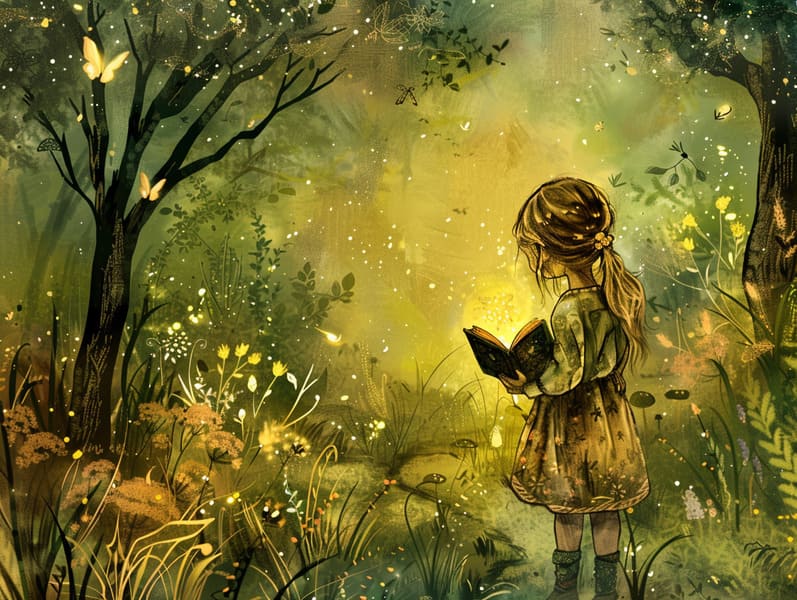Understanding the Joy of Nighttime Narratives: Establishing Cherished Times with Your Loved Ones
Understanding the Joy of Nighttime Narratives: Establishing Cherished Times with Your Loved Ones
Blog Article

Sleepy time is a precious time for parents and children. It’s a time to settle down, get cozy, and revel in the magic of sleepy-time tales.
For ages, evening stories for little ones have been a adored habit, offering more than just a way to fall asleep. They provide an opportunity for closeness, knowledge acquisition, and igniting imagination.
Why Bedtime Stories are Important
Stories for kids at bedtime are more than just a way to complete the day. They play a significant role in a child’s growth and in fortifying the caregiver-child bond. Here’s why they are beneficial:
1. Together Time: Sharing bedtime stories develops a special moment of connection between parents and children. It’s a moment of togetherness that helps children feel important and protected.
2. Language Development: Listening to stories helps children develop their language acquisition. They pick up new language, understand sentence structures, and improve their listening and interpretation abilities.
3. Imagination and Creativity: Children's tales usher them to wondrous worlds, promoting imagination. They imagine characters, settings, and adventures, which powers their inventiveness.
4. Emotional Growth: Nighttime tales often feature characters facing problems and sentiments. These scripts help kids understand and address their own emotions, developing feeling recognition.
5. Thinking Skills: Following a story helps children develop attention span, recollection, and logical thinking. They enhance to follow scripts, remember pieces, and foresee consequences.
Incorporating Bedtime Stories into Your Routine
Starting a bedtime custom that has storytelling is manageable and fulfilling. Here’s how to turn it into a valued part of your bedtime habit:
1. Choose a Comfortable Spot: Identify a peaceful place where you and your child can get cozy without disturbances. A comfy bed or a relaxing reading nook works wonderfully.
2. Set a Regular Time: Establish a set time each night for reading. Consistency helps children be prepared and makes the routine easier to copyright.
3. Pick Stories for Their Age: Pick tales that are right for your child’s maturity. Younger children might like books with pictures with simple narratives, while school-age kids may like complex plots with more engaging plots.
4. Make the Story Interactive: Ensure the tale become real by doing different character voices, adding effect sounds, and getting your child to be active. Ask queries about the story to hold their attention.
5. Set a Tranquil Atmosphere: Dim the lights, use whispers, and create a tranquil environment to help your child calm down.
How to Locate Bedtime Stories
There are varied places to look where you can find great bedtime stories for children. Here are some options to think about:
1. Books for Children: Try your neighborhood library or bookstore to find a varied selection of bedtime stories for kids. Looking through the selections together can be a great activity that also lets children to decide on stories that interest them.
2. Web Sources: There are many sites that offer free bedtime stories. Sites like kids' story platforms provide a variety of short stories for kids that you can print out. These resources are great for finding new and interesting stories without fees.
3. Audio Stories and Apps: For nights when you’re too exhausted to read, consider audiobooks or storytelling apps. These can provide a soothing voice to read your child a story, ensuring they still get their bedtime story fix. Apps often offer fun elements that can keep them engaged further.
4. Individualized Stories: Write your own stories tailored to your child’s experiences. Personalized stories can be especially engaging and meaningful. You can include your child in the development process, making them a part of the adventure.
Short Story Benefits
Brief stories for children are extremely effective for bedtime. They provide all the positives of longer stories but are more brief, making them perfect for relaxing before sleep. Here’s why short stories are a good choice:
1. Effortless to Follow: To-the-point tales are clear and effortless for children to follow, even after a long day. They can readily grasp the line and enjoy the story without losing focus.
2. Instant Engagement: Short tales readily engage children, catching their attention and creativity. This makes them excellent for keeping bedtime traditions manageable yet enjoyable.
3. Diverse Options: Concise narratives offer for variety in your bedtime books. You can find a different story each night, keeping the custom interesting and exciting for your child.
4. Manages Time Well: For busy parents, brief tales are a time-efficient way to verify children still get their nightly dose of storytelling. They fit well into a tight schedule while still offering the full good aspects of a bedtime story.
The Delight of "Read Me a Story"
The simple phrase, “Read me a book,” can give a world of magic for children. Answering to this request not only satisfies a child’s request for attention and engagement but also builds lasting experiences. Here’s why it’s wonderful:
1. Connection: Reading to your more info child strengthens a deep emotional link. It’s a time for intimacy, sharing, and bonding.
2. Tradition: Building a bedtime story ritual creates a important tradition that children are excited for every night. It’s a ritual that can be transferred through generations.
3. Development Together: As you tell stories, you’ll experience your child’s growth and learning. Their interest, reactions, and understanding of the stories evolve, offering insights into their developing minds.
4. Secure Place: Bedtime stories provide a safe space for children to navigate emotions, face fears, and find comfort in the recognizable presence of a parent.
The Last Word
Nightly tales for children are a essential tool for supporting a child’s progress and forming unforgettable events of bonding.